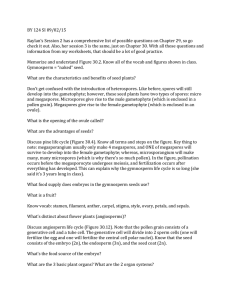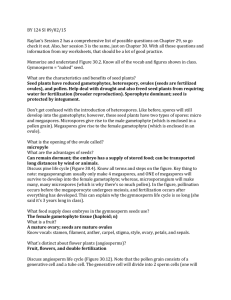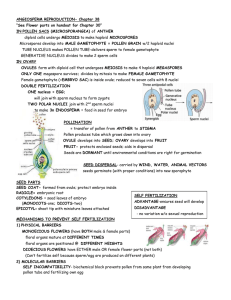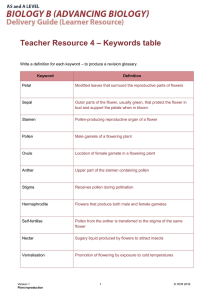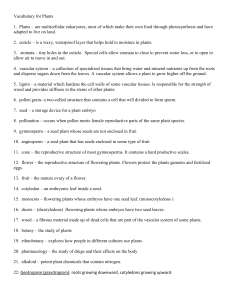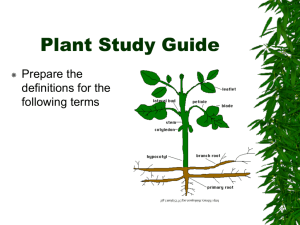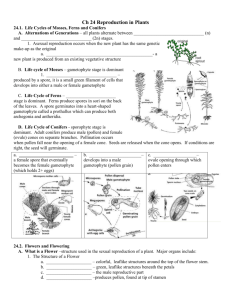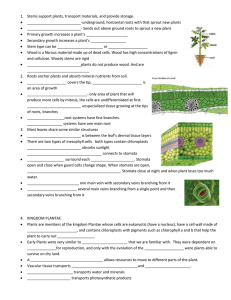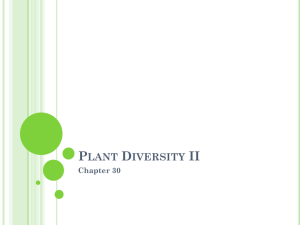PA study guide plant diversity and evolution III 2012
advertisement
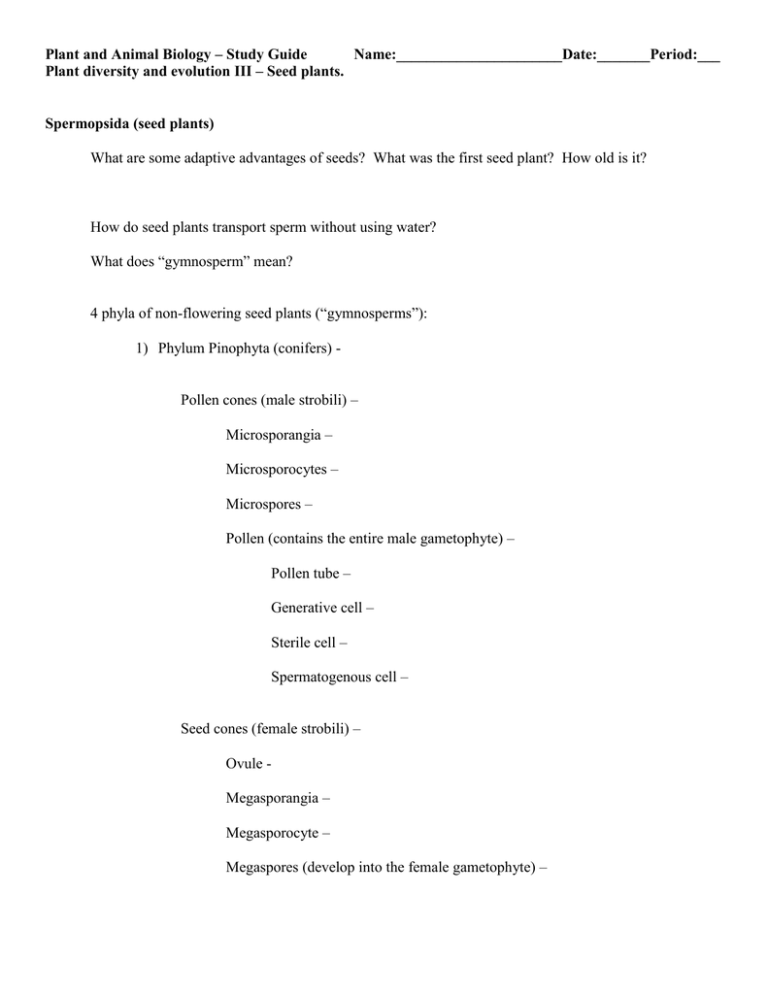
Plant and Animal Biology – Study Guide Name:______________________Date:_______Period:___ Plant diversity and evolution III – Seed plants. Spermopsida (seed plants) What are some adaptive advantages of seeds? What was the first seed plant? How old is it? How do seed plants transport sperm without using water? What does “gymnosperm” mean? 4 phyla of non-flowering seed plants (“gymnosperms”): 1) Phylum Pinophyta (conifers) Pollen cones (male strobili) – Microsporangia – Microsporocytes – Microspores – Pollen (contains the entire male gametophyte) – Pollen tube – Generative cell – Sterile cell – Spermatogenous cell – Seed cones (female strobili) – Ovule Megasporangia – Megasporocyte – Megaspores (develop into the female gametophyte) – 2) Phylum Ginkophyta (ginkgoes) Only one living species (give the scientific and common names) – Does it survive naturally anywhere? 3) Phylum Cycadophyta (Cycads) Appearance – How many living species? What is unique about the sperm of cycads? 4) Phylum Gnetophyta (gnetophytes) How many known species? Describe the general characteristics of each genus: Ephedra – Gnetum – Welwitschia – Flowering plants (Angiosperms) are now the most diverse group, with over 250,000 species. They are characterized by reproductive structures, called flowers, which are made of several types of specialized leaves. Seeds are enclosed in the mature ovary, called a fruit. Development of angiosperm gametophytes: Female: where does this take place? Megasporocyte – Megaspores – Female gametophyte (also called the megagametophyte) Male: where does this take place? Microsporocyte – Microspores – Pollen grain – Exine – Generative nucleus – Sperm – (how many?) Tube nucleus – Pollination – Define pollination, then list three ways pollen can be transferred in flowering plants Fertilization Pollen tube – Double fertilization (what is the advantage of this?) – Endosperm – Flowering plants now vastly outnumber all other living species combined. Discuss three reasons why this group may have been so successful in recent (= the past 65 million) years (hint: 2 related to reproduction, one related to “survival of the luckiest”).
